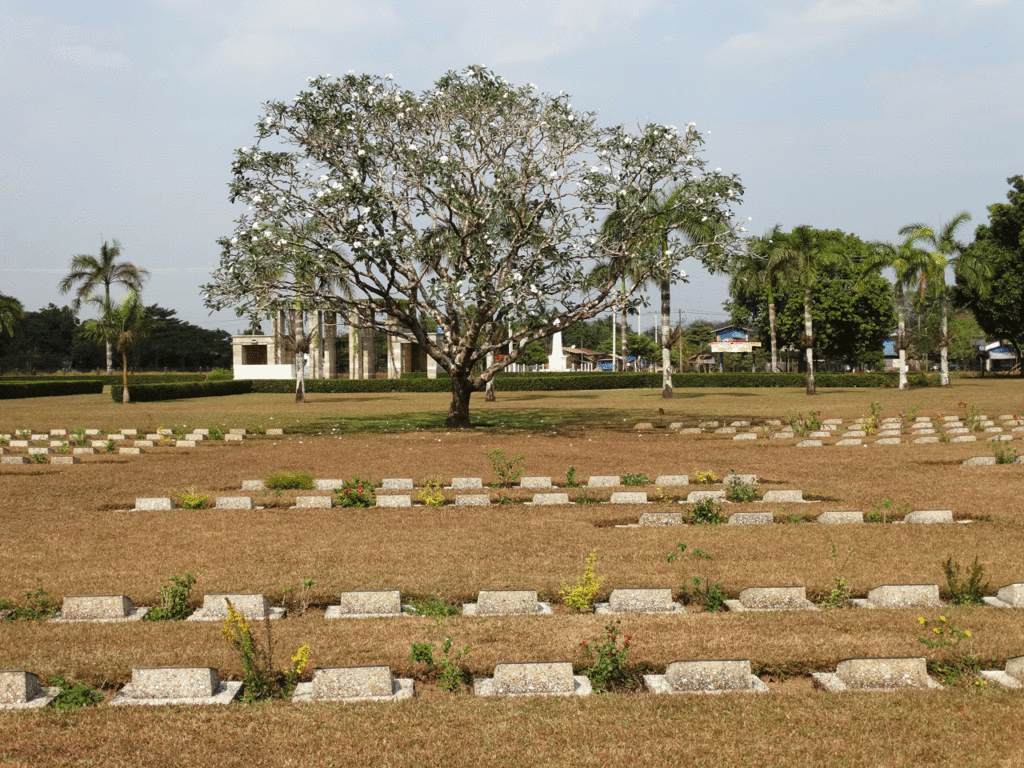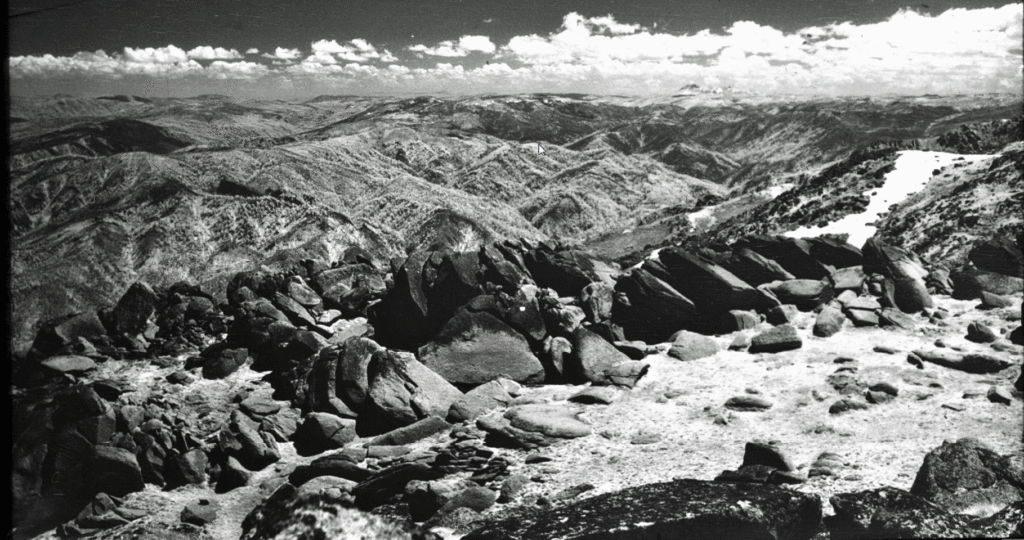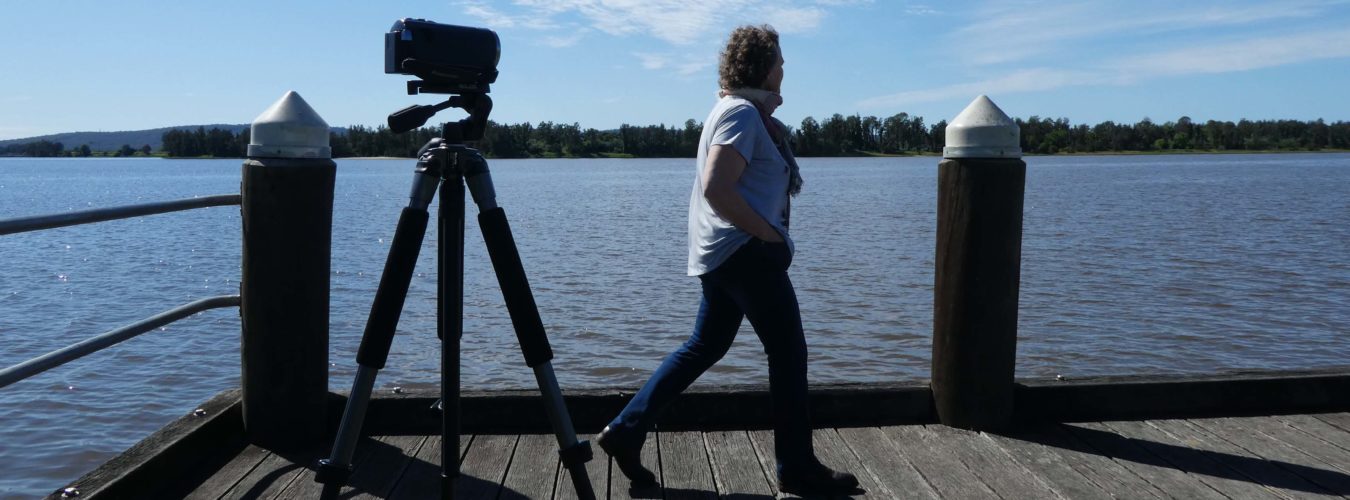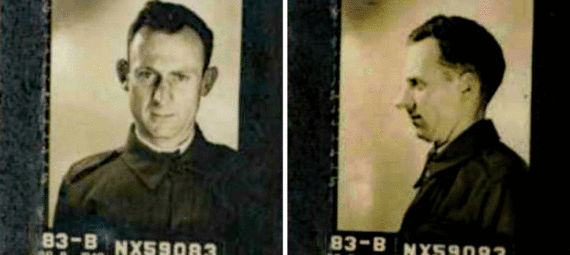At the end of the track to Bullimah Spur in Bouddi National Park at Killcare, the story of a lost soldier is fading into history.
The track opens onto one of the most spectacular views on the NSW Central Coast – looking south over Putty Beach, Box Head and across the mouth of Broken Bay to Barrenjoey Lighthouse. On a clear day you can see the modern Sydney skyline way off in the distance.
With views like this it would be easy to miss the small weathered plaque on the rock platform below your feet. A tiny memorial to Charles D’Arcy Roberts – a name few people have heard of, and whose contribution almost nobody remembers. In 2018 it was 70 years since his family and friends installed this memorial.
AIF signalman Charles Roberts died unmarried, and, as far as we know, without children. His parents and his only brother have long since gone. Here is his story. Lest We Forget.

The man
Charles D’Arcy Roberts was born March 6, 1909 in St Leonards – the eldest son of D’Arcy Falconer Roberts (died 1961) and Joan Margaret Roberts (died 1967). The family lived at Linfield on Sydney’s north shore. His brother – Grantley D’Arcy Roberts, was born in 1910. Charles went to Sydney Church of England Grammar School 1921-27 and later became a solicitor.
His great love in life was nature. He was a keen bushwalker and conservationist and a member of the Coast and Mountain Walkers Club and one time secretary of the NSW Bushwalkers Federation (now Bushwalking NSW ). The 1930s was the height of the bushwalking movement in NSW and Charles Roberts was in the thick of it. There was a ground swell of interest in all things natural, and when the Great Depression struck and incomes shrank, people increasingly turned to bushwalking as an inexpensive, healthy form of recreation.
He was a keen photographer and a collection of black and white lantern slides taken by him of the Snowy Mountains in 1935 is held in the Australian National Library. The images include Abbott Peak, Blue Lake, Charlottes Pass, Dead Horse Creek, Geehi River, Lake Albina, Lake Cootapatamba, Mount Kosciuszko, Seaman’s Hut, Snowy River, Wilkinson’s Valley, Leatherbarrel Creek and Tom Groggin. The pictures – some of which include him – reflect his love of nature and his frequent hiking adventures. Charles D’Arcy Roberts was instrumental in the creation of Bouddi National Park – one of the first such parks in NSW – and was a trustee for a number of years.

His war service
Charles Roberts was 31 when he enlisted at Paddington on August 26, 1940 and was posted to the signals division Australian Infantry Forces, then transferred to 8th division signals at Liverpool a year later. He sailed for Singapore on February 19, 1941. He carried out a variety of duties but none as punishing as the Battle of Muar at Parit Sulong on the Malay Peninsula, north of Singapore in January 1942.
The Battle of Muar was the last major battle of the Malayan Campaign during the Second World War. It took place from 14–22 January 1942 around Gemensah Bridge and on the Muar River. Here Australian and Indian forces engaged in a desperate battle against the Japanese Imperial Guards Division and the men of 8th Division Signals maintained communications.

Surrounded and outnumbered, and under continuous bombardment this combined force was ordered to fight its way out, which ultimately proved futile. The order was given for men to break out through the jungle. During the battle and retreat over 300 Australians died, however, with the assistance of local people, and especially the Chinese community, many of those who survived later reached British lines at Yong Peng – and among these was Charles Roberts. His war records show he suffered a bomb wound to his left shoulder and was hospitalised in Singapore before re-joining his unit.
By 14 February the Japanese had captured Singapore’s reservoirs and pumping stations. The bombing, fighting and heavy shelling continued; many of the troops, separated from their units, wandered around aimlessly and the hospitals were crowded and overflowing. Some troops were deserting. Hard fighting continued but on 15 February Lieutenant General Arthur Percival, the British commander in Singapore, called for a ceasefire and made the decision to surrender. British Empire troops were to lay down their arms at 8.30 that night. More than 100,000 troops became prisoners of war together with hundreds of European civilians who were interned. Charles Roberts found himself in Changi Prison.
Charles Robert’s hand-written war records are difficult to decipher in places, but it appears worse was to come when he found himself as part of F force – one of the last forced-labour gangs to leave Changi to work on the notorious Thai Burma Railway. F Force consisted of 3662 Australians and 3400 British. Many of these men, particularly the British, were unwell even before they left Singapore. When isolated in far up-country Thailand, remote from food and medical supplies, and drenched by monsoonal rains, 29 per cent (1060) of the Australians and 60 per cent (2036) of the British prisoners died.

F Force’s hardships began when they were sent to Thailand by train. Packed into suffocating metal railway trucks with little food and water, many with dysentery. On reaching Ban Pong in Thailand, F Force was then forced to march over 300 kilometres to camps near the border with Burma (now Myanmar).
Charles Roberts ended up in a camp located only short distance from Three Pagodas Pass and the border called Kami Songkurai which was one of the most remote camps that Australians occupied on the Thai–Burma railway. F Force arrived there on 25 May 1943. Within a day of their arrival, working parties were sent out to work by the Japanese.
Like other camps in this region, Kami Songkurai had primitive facilities. Rations were grossly inadequate, there were almost no medical supplies. With constant monsoonal rains, the health of those who survived the cholera epidemic continued to deteriorate. The stream, the major source of water for bathing, became foul and the hospitals were poorly equipped.
For all this, the situation at Kami Songkurai was said to be less horrific than some other camps. The officer in charge was not so cruel as some and he did not force sick men out to work. The food supply was also better relative to other camps nearby. By the end of July the Australians had lost 23 men, 14 from cholera, a relatively low rate of death to this disease.
Among those to succumb to the conditions was Charles Roberts who died there on July 3, 1943 of cerebral malaria . It must have been a horrible end, far from the ruggedly beautiful Bouddi National Park he had loved. In those final dreadful days, you can’t help but wonder if he thought of it. They buried him there in the steaming, sodden jungle at Kami Songkurai.

Much later, he was reburied at Thanbyuzayat War Cemetery, Grave 14, A, 8 Collective Grave A on August 17, 1949. The village of Thanbyuzayat is 65 kilometres south of the port of Moulmein, and the war cemetery lies at the foot of the hills which separate the Myanmar from Thailand. Thanbyuzayat became the cemetery for all allied personnel who died between Moulmein (now Mawlamyine) and Ni Thea (Nieke). It now holds 3149 Commonwealth burials and 621 Dutch.
As was the practice of the Imperial/Commonwealth War Graves Commission since World War I, each of the Allied POWs was given an individual headstone, if possible. This listed the badge of the serviceman’s unit, his name, military number, date, age and date of death. There was no distinction on account of military rank or race.

The Imperial War Graves Commission wrote to Charles Darcy’s parents in May 1951 sending them a picture of his grave.
“For your information, it is advised that Collective Graves are established in cases where a number of remains are known to be those of certain deceased members but individual identification is not possible. A cross is erected over each grave in the group and upon each cross is inscribed the service details of one deceased member. In addition, the inscription “Buried near this spot” appears.
You can’t help wonder if this was much comfort to his devastated family back home.
Unfading splendour
There are two NSW war memorials which honour bushwalkers who died during WWII – and Charles D’Arcy Roberts’ name is linked to both.
His name is on the honour roll of the main Bushwalkers’ War Memorial at Splendour Rock in Blue Mountains National Park. The isolated memorial was set up by NSW Bushwalking Federation and is at least a half day’s walk from the nearest car park. Bushwalkers still set off pre-dawn on Anzac Day to commemorate the fallen at this spot. The simple bronze plaque was unveiled on Mount Dingo, in the heart of the Wild Dog Mountains, by bushwalking pioneer Paddy Pallin and 80-90 Bushwalkers at sunrise on Anzac Day 1948. These are the words spoken by Paddy Pallin:
“Those familiar landmarks – Mt Cloudmaker, the Gangerang Range, Mt Paralyser and Mt Gouougang – a spiritual home of the Bushwalkers – all lie within our gaze from this wonderful viewpoint. We could wonder how often had our fallen comrades gazed in happiness upon this scene that we still enjoy? Upon this rock, as sunrise lit the cliffs they loved so well, was placed a permanent record that we honoured those known and unknown Bushwalkers, who gave their lives for our freedom. And, their splendour shall never fade.”

Information in the Honour Roll of the Splendour Rock Memorial described Charles D’Arcy Roberts like this:
“The protection and preservation of bushlands was the job which Charles Roberts adopted as his own particular contribution to the community and he threw all his energies and his genius for organisation into this work during the years he was associated with the Coast and Mountain Walkers and with the Bushwalkers Federation as its Honorary Secretary.
“He was of the adventurous type who loved to break into new country; he was a good comrade and a good bushman and he did what was in his power to ensure that others would be able to find in the bush the same happiness as he himself had found. He resigned from the Honorary Secretaryship of the Federation to join the Army and gave his life in Malaya, and stories we have heard show that the same spirit of self-sacrifice and comradeship which we knew of old, still manifested itself during the time he was a Prisoner of War’

The Bouddi Memorial
About a month after the unveiling of the Splendour Rock Memorial, another plaque was erected, specifically to the memory of Charles D’Arcy Roberts in Bouddi National Park – the park he loved so much and had worked so hard to establish.
He was one of the three trustees from the Bushwalking Federation of NSW appointed when Bouddi National Park was declared – one of the earliest “natural” parks in NSW. Others were Hudson Smith and solicitor and conservationist, Marie Byles. Local government also had three trustees – including at one time Arthur Edward Lillicrap who was Erina Shire president in 1944. They used to hold trustee meetings on the beach.
Marie Byles wrote this about him in a National Parks Association Bulletin:
“One of the first three trustees was Charles D’Arcy Roberts, who had had a picture of Maitland Bay in his office long before it had been made a park. He loved the area and knew it from McMaster’s Beach at the north east, to Killcare at the south west, and he was known to lead moon-light, midnight parties through the untrodden scrub. While I was abroad in 1938, Charlie took over the secretaryship and under his care various further lands were added to enlarge the original area. Less than a year after my return the Second World War commenced. Charlie enlisted and was to lose his life in a prisoner of war camp in Malaya, a life that the bushwalking movement and Bouddi in particular could ill afford to lose. After the war was over we thought of ways and means to commemorate him in Bouddi Natural Park. Eventually we decided to get leave to name the beach south west of Maitland Bay, Bullimah, the Home of the Great Spirit and erect a plaque on Bullimah outlook in honour of Charlie. On a windy afternoon of 30th May, 1948, Mr Lillicrap officiated, and Charlie’s parents came to the little commemoration ceremony there.”


